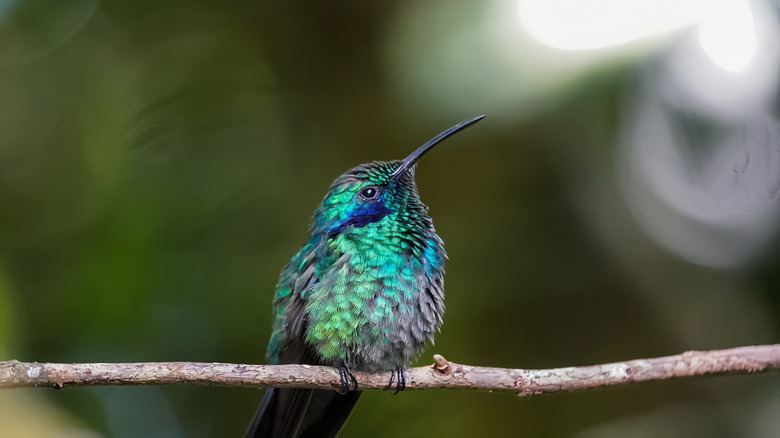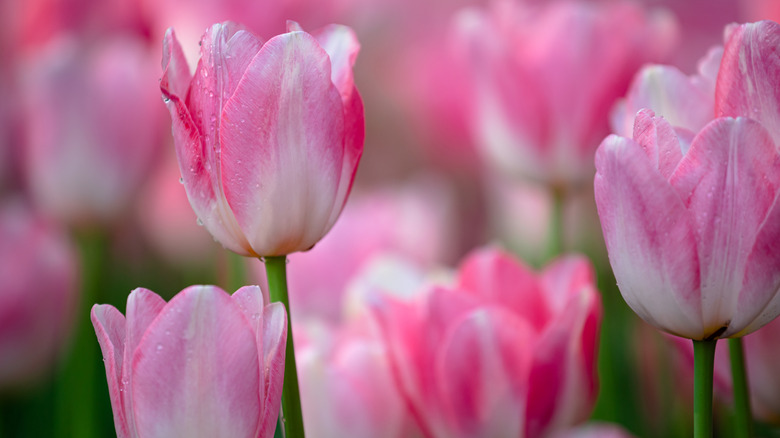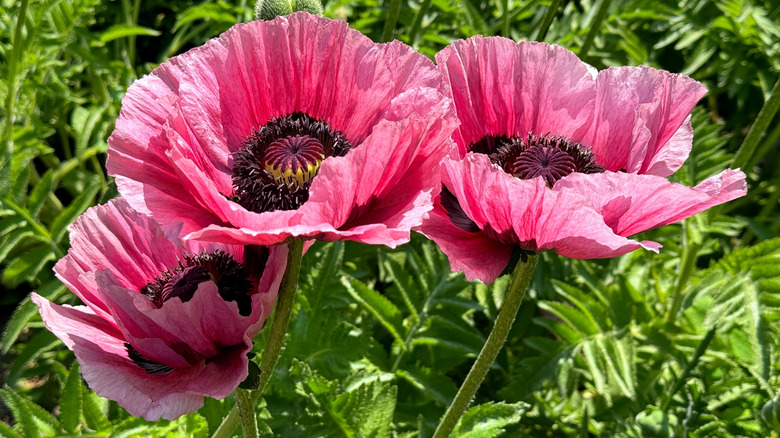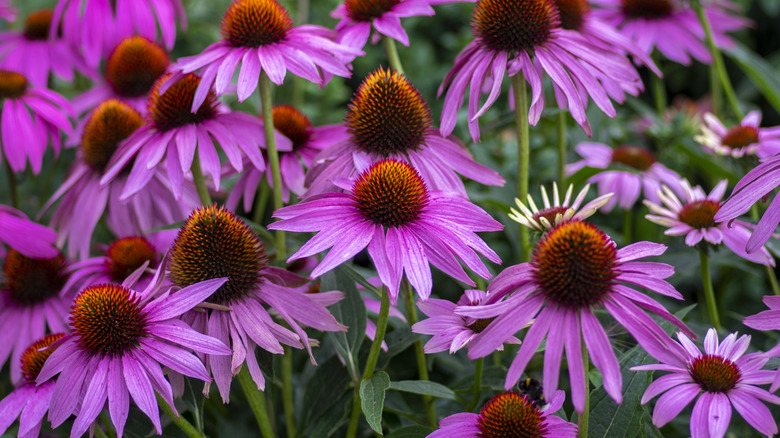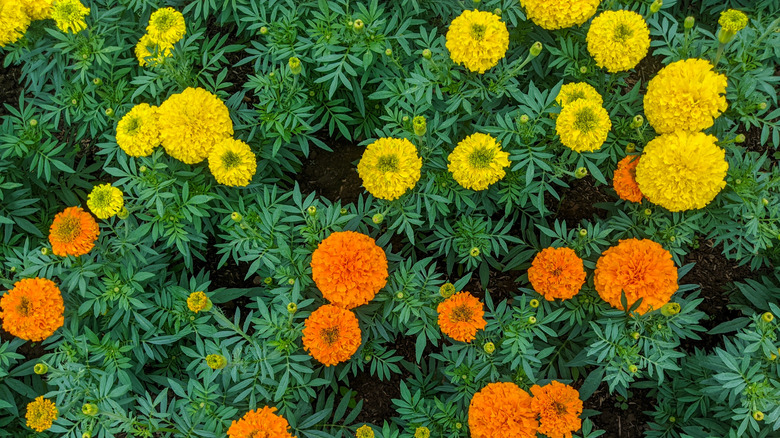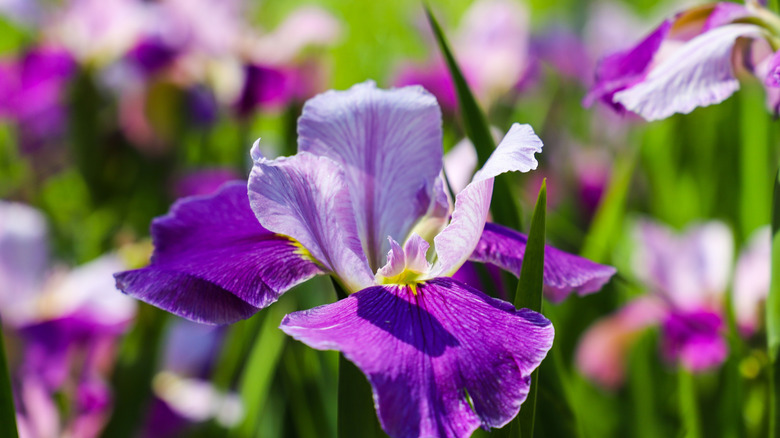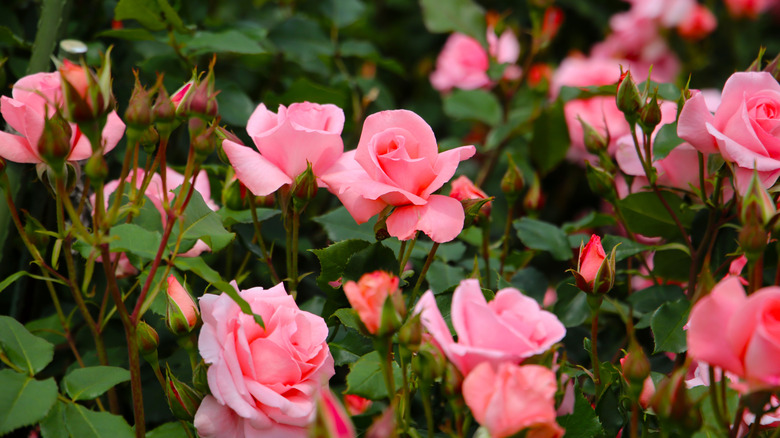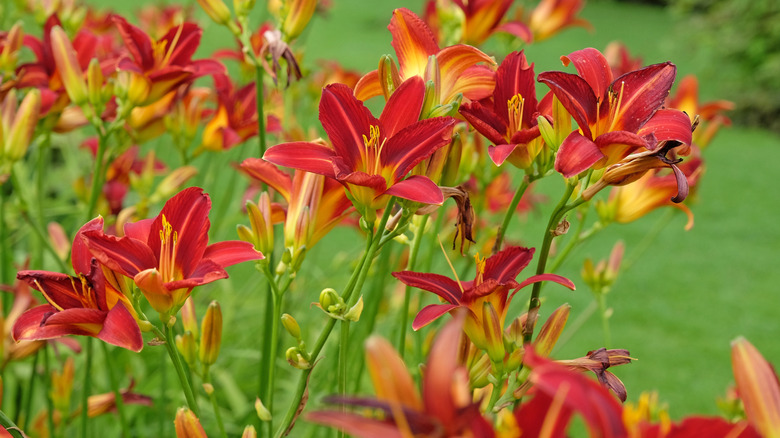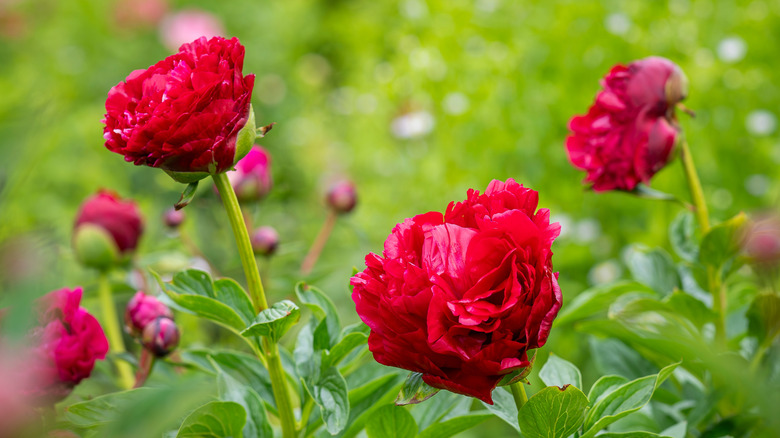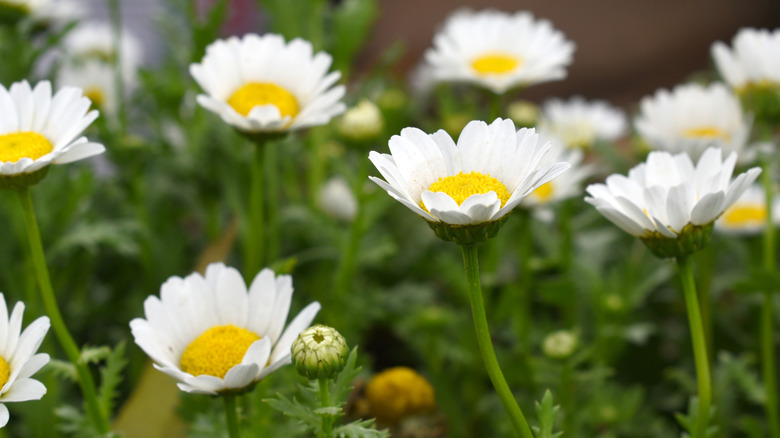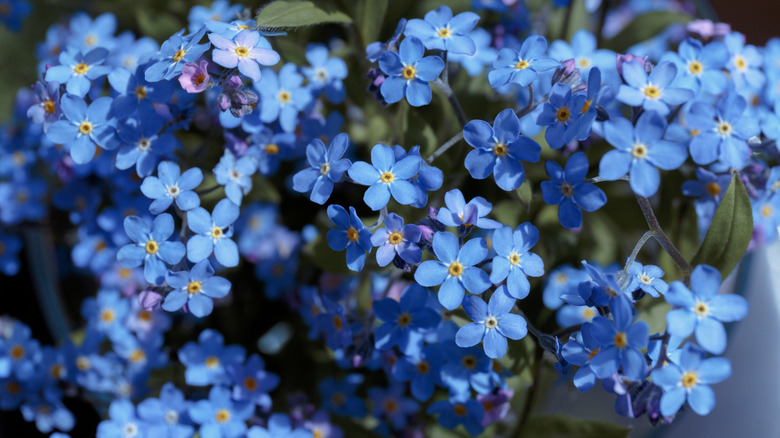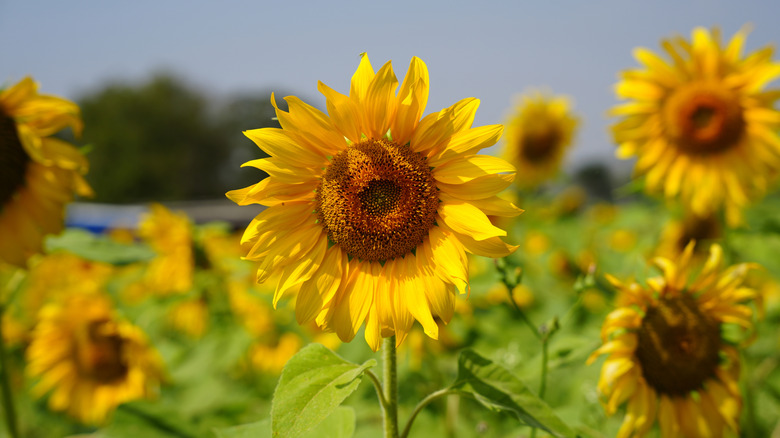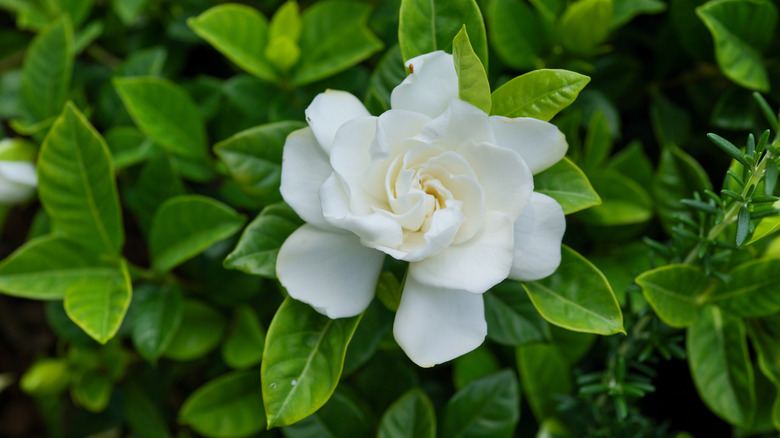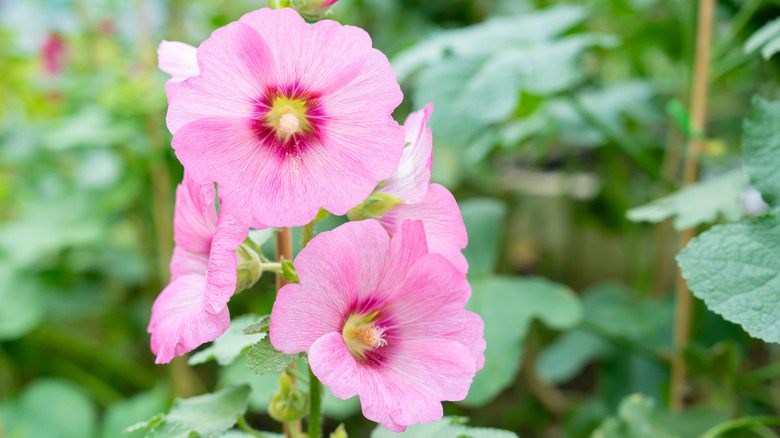16 Gorgeous Flowers Hummingbirds Hate
As far as birds go, hummingbirds are some of the cutest feathery guests that can grace your garden. They're tiny bundles of energy that zip, hover, and flash iridescent colors searching for their next sweet sip. You might think that just about any showy bloom will coax them into your yard. However, hummingbirds are after two things: A reliable source of high-energy nectar that's also super easy to reach. But not every flower is created equal, so if your goal is to create a garden that keeps hummingbirds coming back for more, it helps to know which flowers drive them away.
The assumption is that hummingbirds prefer red and orange flowers, but they don't have a favorite color at all. Instead, hummingbirds look for blooms that give them the most bang for their buck, meaning the biggest energy gain. To turn your space into a hummingbird heaven, aim for nectar-rich flowers, not just showy ones. You'll be surprised to find that lush, fragrant blooms like peonies and gardenias, as well as cheery varieties like daisies and marigolds, are gorgeous showstoppers that hummingbirds will barely pay attention to. Some have more ornamental aesthetics than oodles of nectar, while others simply have the wrong shape for a hummingbird's feeding style. So, when you're not seeing flurries of hummingbirds in your yard, find out whether you're inadvertently growing blooms these adorable little birds hate.
Daffodils
Daffodils (Narcissus) are iconic springtime blooms that have a lot of things going for them, like coming back year after year and attracting early pollinators. But their super showy, cheery color — combined with a narrow shape and low nectar production — makes them very unappealing to hummingbirds. Plus, the perennial often blooms too early for hummingbirds' liking, typically bursting open in late winter or early spring in USDA Hardiness Zones 3 through 9.
Tulips
Tulips might be showstoppers, but hummingbirds usually fly right past them. While their bright colors may fill your garden with oodles of beauty, tulips don't have the characteristics these tiny birds are searching for. Their cup-shaped blooms aren't the right fit for a hummingbird's long, slender beak, making it awkward to sip from. Tulips also don't produce enough nectar to make the effort worthwhile.
Oriental poppies
Oriental poppies (Papaver orientale) are simply breathtaking with their big, crinkled petals and bold, dramatic colors, but hummingbirds tend to look elsewhere. Despite their striking appearance, these blooms don't offer the sweet nectar hummingbirds rely on for energy. Their wide, open shape also isn't a great match for a hummingbird's preferred method of feeding, which favors tubular flowers that allow them to hover as they sip.
Coneflowers
Coneflowers (Echinacea purpurea), with their sunny petals and spiky centers, are pollinator magnets, but mostly for bees and butterflies, not hummingbirds. While their bold colors can momentarily catch a hummingbird's attention, the blooms don't have the tubular shape or abundant nectar these tiny birds prefer. What little nectar they possess is tucked deep inside the cone, making it awkward for hummingbirds to feast. Although coneflowers are one of the plants that'll keep your garden full of pollinators, they're not your best bet if your main goal is to attract hummingbirds.
Marigolds
Although they are an excellent option for pest control and adding color to your landscape, marigolds (Tagetes) are often ignored by hummingbirds. Their clustered petals and dense centers aren't designed for the hovering-while-sipping feeding style of these tiny birds. What's more, marigold nectar doesn't have as much sugar as other blooms. Even the scent, which repels some insects, can be off-putting to hummingbirds.
Irises
Irises are elegant, sculptural flowers that bring drama to your garden, but hummingbirds rarely bother with them. Their showy petals and rich colors might seem inviting; however, irises don't have the kind of nectar payoff these little fliers seek out. Their ruffled blooms can be pretty awkward for hummingbirds to navigate, and their nectar is often hard to reach anyway.
Roses
Roses might be the ultimate garden classic, but to hummingbirds, not so much. Their layered, tightly packed petals aren't shaped for a hummingbird's feeding style, and of the 360 rose varieties, most modern versions have been bred more for beauty and fragrance than for pollinator appeal. To a hummingbird, roses are pretty to look at from a distance, but not a reliable food source.
Daylilies
The daylily (Hemerocallis) bursts with vibrant color, ranging from and it looks like the perfect flower for hummingbirds. Most of the time, they're not. While their trumpet-shaped blooms seem like a perfect fit, many daylily varieties produce little to no nectar, leaving hummingbirds disappointed. Although daylilies won't bring hummingbirds to your yard, there's another type of lily that might.
Peonies
Despite their lush, romantic blooms, if you have peonies (Paeonia) planted in your yard, don't expect to get many, if any, friendly visits from hummingbirds. Though the showy flower has an invigorating scent that attracts plenty of pollinators, hummingbirds aren't one of them, thanks to their single or double flower formations that make it difficult for them to reach the nectar.
Daisies
Daisies (Bellis perennis) bring a cheerful, sunny aesthetic to gardens, and their flat, open faces are great for bees and butterflies, but they're not designed for a hovering hummingbird. Daisies also don't produce very much nectar, so there's no real payoff for the effort it would take to go in for a closer look. Even their bright petals, while eye-catching, don't outweigh the lack of a sweet reward.
Lily of the valley
The lily of the valley (Convallaria majalis) might look like something out of a fairytale with its tiny, bell-shaped blooms and heavenly fragrance, but hummingbirds tend to ignore it. While the shape might seem perfect, their flowers produce hardly any nectar, and their downward-facing bells make it an awkward angle for hummingbirds to feed. These delicate-looking blooms are better for bees that can crawl inside rather than tiny birds that hover.
Blackeyed Susans
Blackeyed Susans (Rudbeckia hirta) light up a garden with their golden petals and dark centers, but they're not exactly known for being hummingbird hotspots. Their nectar supply is minimal, and the flower's design doesn't make it easy for a hummingbird's long bill to reach whatever is inside. Think of blackeyed Susans as the sunny background in your garden's cast, not the main attraction for hungry hummers.
Forget-me-nots
Forget-me-nots (Myosotis) sprinkle the garden with clusters of pretty sky-blue flowers, but hummingbirds hardly bother with them. These petite blooms are designed more for small insects than for hovering birds. Their tiny size offers little nectar, and their structure doesn't match a hummingbird's feeding style. If you want to draw them in, mix forget-me-nots with tubular, nectar-rich flowers they can sip from much more easily.
Sunflowers
While some people never witness a hummingbird hovering over sunflowers (Helianthus), others have. That's because each tiny floret in the center of a sunflower only has about one drop of nectar. Although, a hummingbird can definitely take a quick sip from each one, it's not likely it's worth their effort. So, if you love sunflowers, we say go for it and see whether they show up. You can always accompany them with the flowers and herbs they do love.
Gardenias
Gardenias (Gardenia jasminoides) are prized for their creamy white blooms and intoxicating fragrance, but hummingbirds usually buzz right by. Despite their showy flowers, gardenias don't produce the abundant, easily accessible nectar hummingbirds crave. Their dense, layered petals make it difficult for the birds' long beaks to reach whatever nectar might be hiding in there. While gardenias can make your garden smell heavenly, they won't do much to make your yard a hummingbird's favorite stomping ground.
Hollyhock
Hollyhocks (Alcea) make a dramatic statement with their towering stalks and layers of vibrant blooms, but they're not at the top of a hummingbird's menu. Despite their generous size, the blossoms often hold little nectar, especially in newer cultivated varieties. Their structure can also be a bit awkward for hummingbirds to work with, making feeding more effort than it's worth. These flowers are great at adding vertical interest and a nostalgic cottage-y feel, but they don't deliver the quick energy boost hummingbirds seek.
